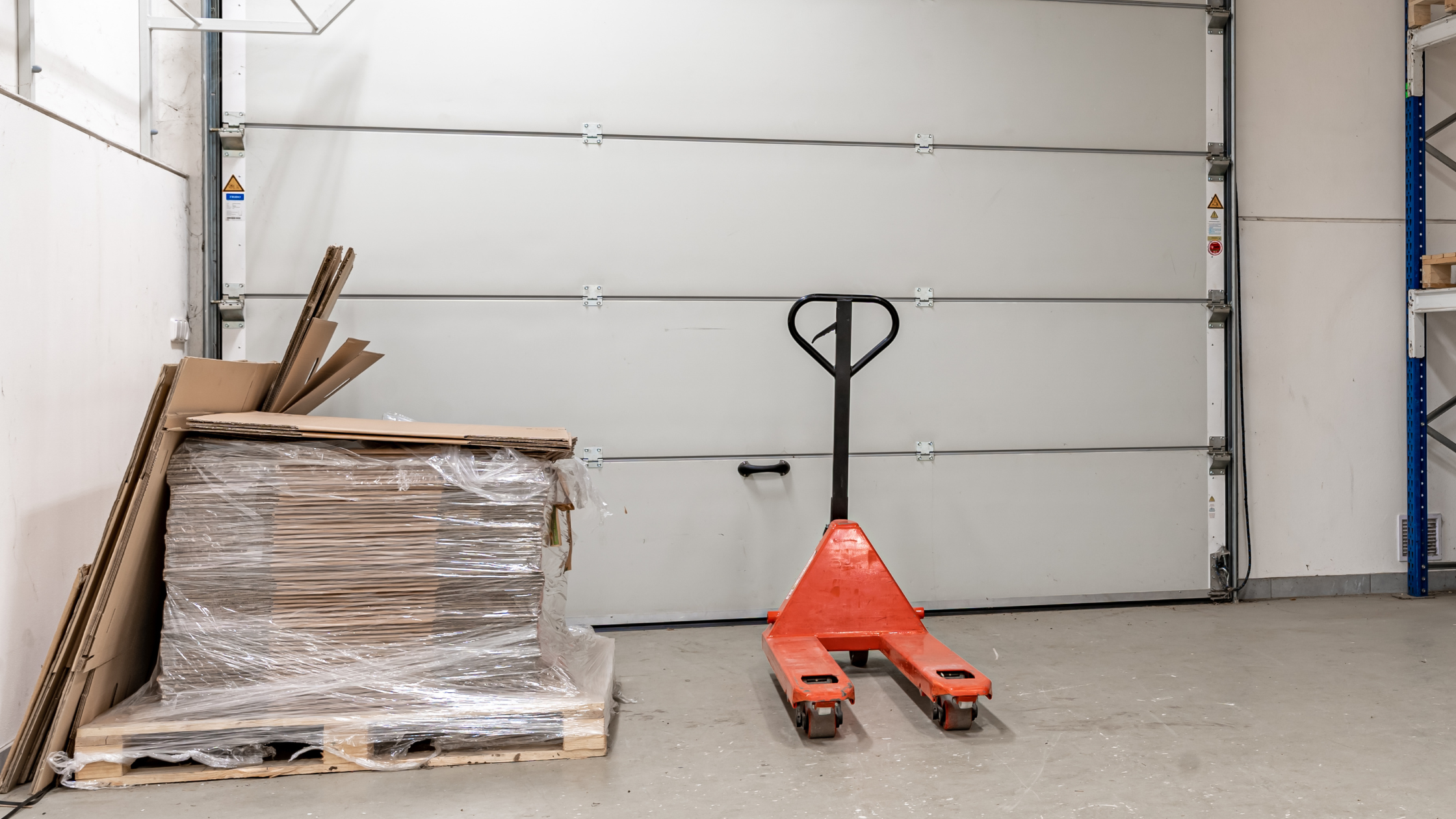Do you ever wonder how pallet jacks work? Well, you’re in luck! In this article, we will delve into the inner workings of these essential tools.
From the various types of pallet jacks to their key components, we will explore everything you need to know.
Discover how pallet jacks effortlessly lift and lower heavy loads, as well as how to steer them with ease.
Plus, we’ll provide valuable maintenance and safety tips to keep your pallet jack in top-notch condition.
Let’s dive in!
Key Takeaways
- Pallet jacks can be either electric or manual, with electric jacks being suitable for heavy-duty hauling and manual jacks being cost-effective and low-maintenance.
- The key components of a pallet jack include the handle, forks, wheels, hydraulic pump, and load backrest.
- Pallet jacks utilise a hydraulic pump and forks to lift and lower loads, with hydraulic fluid creating pressure to raise the forks and releasing the handle allowing the forks to lower.
- Manoeuvring and steering a pallet jack involves positioning it parallel to the pallet, releasing the brake, and using the handle to move forward and steer in the desired direction.
Types of Pallet Jacks

There are several types of pallet jacks that you can choose from to meet your specific needs.
The two main types are electric pallet jacks and manual pallet jacks. Electric pallet jacks are powered by an electric motor and are ideal for heavy-duty and long-distance hauling. They’re easy to operate, as they require minimal physical effort from the user. Electric pallet jacks also come with various features, such as load weight indicators and adjustable forks, making them versatile and efficient.
On the other hand, manual pallet jacks are operated by hand and are suitable for lighter loads and shorter distances. They’re cost-effective and require less maintenance compared to their electric counterparts. However, manual pallet jacks may require more physical effort to operate.
Key Components of a Pallet Jack
To understand how a pallet jack works, you need to be familiar with its key components.
The main components of a pallet jack include the handle, forks, wheels, hydraulic pump, and the load backrest.
The handle is used to steer and control the pallet jack, while the forks are responsible for lifting and carrying the load.
The wheels, usually made of nylon or polyurethane, provide smooth movement and stability.
The hydraulic pump is the heart of the pallet jack mechanics, as it’s responsible for lifting and lowering the forks.
Finally, the load backrest acts as a support for the load, preventing it from falling backward during pallet jack operation.
Understanding these key components is crucial for operating a pallet jack efficiently and safely.
How Pallet Jacks Lift and Lower Loads
To lift and lower loads, pallet jacks utilise the hydraulic pump in conjunction with the forks. The hydraulic mechanism is responsible for the smooth and efficient movement of the forks, allowing for easy lifting and lowering of heavy loads.
When the operator pumps the handle of the pallet jack, hydraulic fluid is forced into the hydraulic cylinder, creating pressure. This pressure causes the piston inside the cylinder to move upward, raising the forks and the load.
Conversely, when the operator releases the handle, the hydraulic fluid is released from the cylinder, allowing the forks to lower back down.
It’s important to note that each pallet jack has a weight capacity, which indicates the maximum load it can safely lift and lower. Exceeding the weight capacity can lead to instability and potential accidents. Therefore, it’s crucial to always adhere to the specified weight limits when operating a pallet jack.
Maneuvering and Steering With a Pallet Jack
Navigate tight spaces and corners effortlessly with a pallet jack’s smooth maneuvering and steering capabilities.
To operate a pallet jack effectively, you need to master certain techniques. Start by positioning the jack parallel to the pallet and ensure the forks are fully inserted. Once the load is secured, release the brake and push the jack forward by pumping the handle up and down. To steer, simply turn the handle in the desired direction.
However, maneuvering in tight areas can pose challenges. One common challenge is limited space, which requires careful navigation to avoid collisions with walls or obstacles. Another challenge is turning in narrow aisles, where you may need to use multiple forward and backward movements to make sharp turns.
Maintenance and Safety Tips for Pallet Jacks
For proper maintenance and safe operation of pallet jacks, it’s essential to regularly inspect and lubricate all moving parts. Regular maintenance ensures that the pallet jack remains in good working condition and prevents potential accidents. Here are some maintenance tips and safety precautions to follow:
- Inspect the pallet jack before each use for any signs of damage, such as loose bolts or worn-out wheels. Repair or replace any damaged parts immediately.
- Lubricate all moving parts, including the wheels, axles, and hydraulic components, according to the manufacturer’s recommendations.
- Check the load capacity of the pallet jack and never exceed it. Overloading can lead to instability and accidents.
- Always wear appropriate personal protective equipment, such as safety shoes and gloves, when operating a pallet jack.
- Follow proper lifting and carrying techniques to avoid strains or injuries.
- Store the pallet jack in a clean and dry area when not in use to prevent rust and damage from moisture.
Frequently Asked Questions
What Are the Weight Limits for Different Types of Pallet Jacks?
The weight limits for different types of pallet jacks vary. It’s important to consider the specific model and design of the jack you are using. Always consult the manufacturer’s guidelines for accurate weight limit information.
Can Pallet Jacks Be Used on Uneven Surfaces?
Yes, pallet jacks can be used on uneven surfaces. However, it is important to note that pallet jack stability may be compromised on such surfaces. Using pallet jacks on even surfaces provides greater stability and reduces the risk of accidents.
How Do You Properly Load and Unload a Pallet Using a Pallet Jack?
To properly load and unload a pallet using a pallet jack, position the forks under the pallet, raise it slightly off the ground, and ensure it’s stable. Then, carefully manoeuvre the pallet to the desired location for effective pallet unloading.
Are There Any Special Safety Precautions to Consider When Operating a Pallet Jack in a Narrow Aisle?
When operating a pallet jack in a narrow aisle, there are special safety precautions to consider. Maneuvering pallet jacks in tight spaces requires caution and awareness of your surroundings to prevent accidents or damage.
What Are Some Common Maintenance Issues That Can Arise With Pallet Jacks and How Can They Be Resolved?
Common maintenance issues with pallet jacks include worn-out wheels, leaking hydraulic fluid, and faulty controls. To resolve these problems, you should replace the wheels, fix the hydraulic system, or repair the controls.



